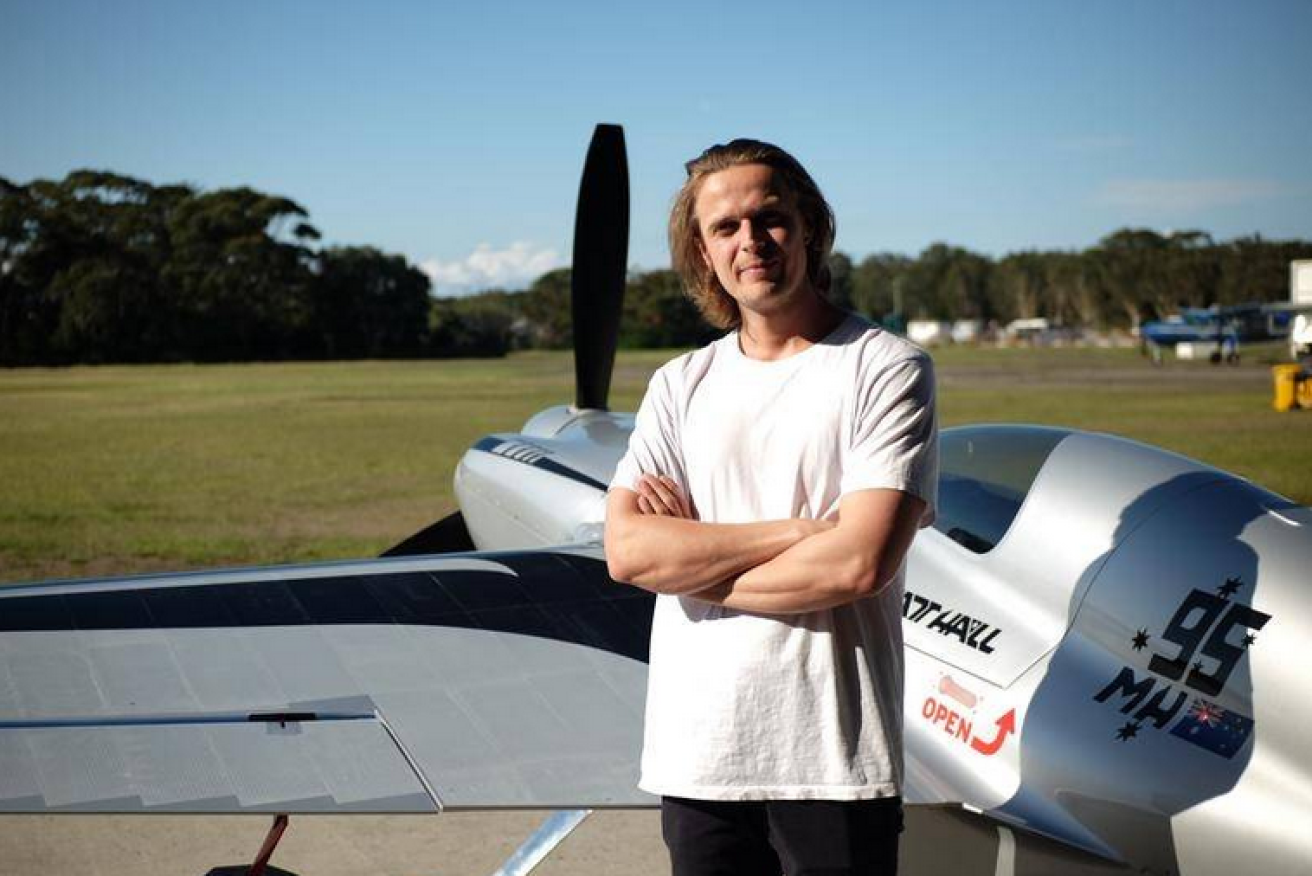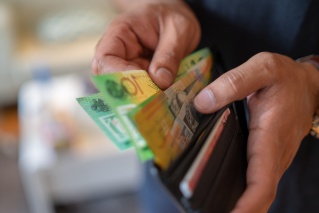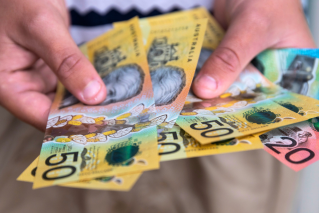Nothing fishy about Aussie inventor’s carbon-saving ‘shark-skin’ tech

Henry Bilinki's 'shark skin' invention greatly reduces drag and cuts carbon emissions. Photo: AAP
Australia’s green bank is backing a “shark skin” for the surface of aircraft and ships to cut fuel use and carbon emissions.
MicroTau CEO Henry Bilinsky will use the $5.6 million in seed funding to turbocharge the technology, which he says was inspired by “nature’s functional surfaces”.
The experimental physicist, lawyer and entrepreneur founded the Sydney-based company in 2016 with the backing of a US Air Force contract for new technology to help clean up fuel-guzzling planes.
Since then, he’s been painstakingly developing “nature’s 3D printer”, inspired by the surfaces of plants and animals and using his own micro-fabrication technology to replicate their microscopic patterns.
“Now we want to shift gears and commercialise,” he told AAP.
“We’re getting ready to put shark skin on planes.”`
Savings costs and carbon
A shark-inspired “riblet” surface, with microscopic ridges spaced about half the width of a human hair apart, could reduced drag up to 10 per cent.
That could save commercial aviation and shipping almost $50 billion in fuel costs and 225 million tonnes of carbon emissions annually if widely applied.
Reducing the carbon footprint was not the focus for potential customers in the early days, Mr Bilinsky says.
“When we got started everyone was just asking us about savings dollars in fuel but the conversation has changed in the past two years and much more in the last year.
“It’s inverted. That’s fantastic, that’s something that was always compelling for us.”
The Clean Energy Finance Corporation led the funding effort and chipped in $2 million, also attracting the support of venture capitalists Bill Tai and Amanda Terry of ACTAI Ventures and Bandera Capital.
Their backing will allow MicroTau to hire more scientists, engineers and business specialists, and get the shark skin product certified for use on large commercial aircraft.
Wide variety of applications
Although the inntial focus has been on aviation, the technology could be applied across a range of industries from shipping to wind turbines.
It can also “print” adhesive gecko skin, anti-reflective moth eyes, self-cleaning lotus leaves and anti-bacterial pitcher plants.
For a cargo ship, more of the drag is “skin friction drag” from the surface of the vessel, so the potential savings are larger, Mr Bilinsky says.
And while each aircraft would need individual certification to use the skin, shipping doesn’t have the same regulatory barrier.
Even so, there are barnacles to deal with without using the poisonous metals that are usually the remedy.
A slippery material tested since last year in Sydney’s Watsons Bay has been free of “fouling” for nine months.
“That result is sufficient for us to get excited and bring it to a marine environment,” Mr Bilinsky said.
The green bank says there is strong commercial demand in transport for ways to reduce fuel use, cut costs and lower emissions.
CEFC CEO Ian Learmonth says the Australian company is leading the market in its unique technology.
“This is a genuine breakthrough solution to a long standing technical challenge in aviation,” he said.
“With applications across aviation and shipping, the technology has the potential to play a practical role in addressing the major challenges in mass transport.”
While preferring electrified planes, MicroTau is aiming to improve aviation fuel efficiency by as much as 10 per cent to build on their flight testing successes.
-AAP








